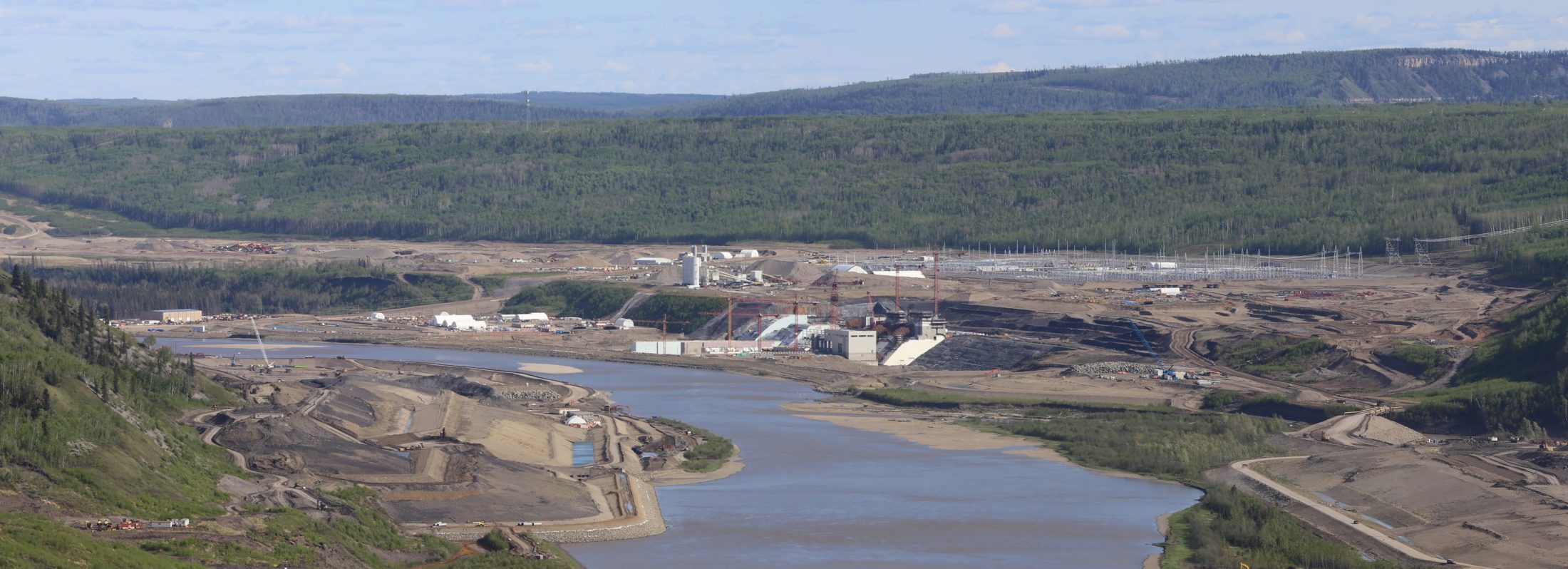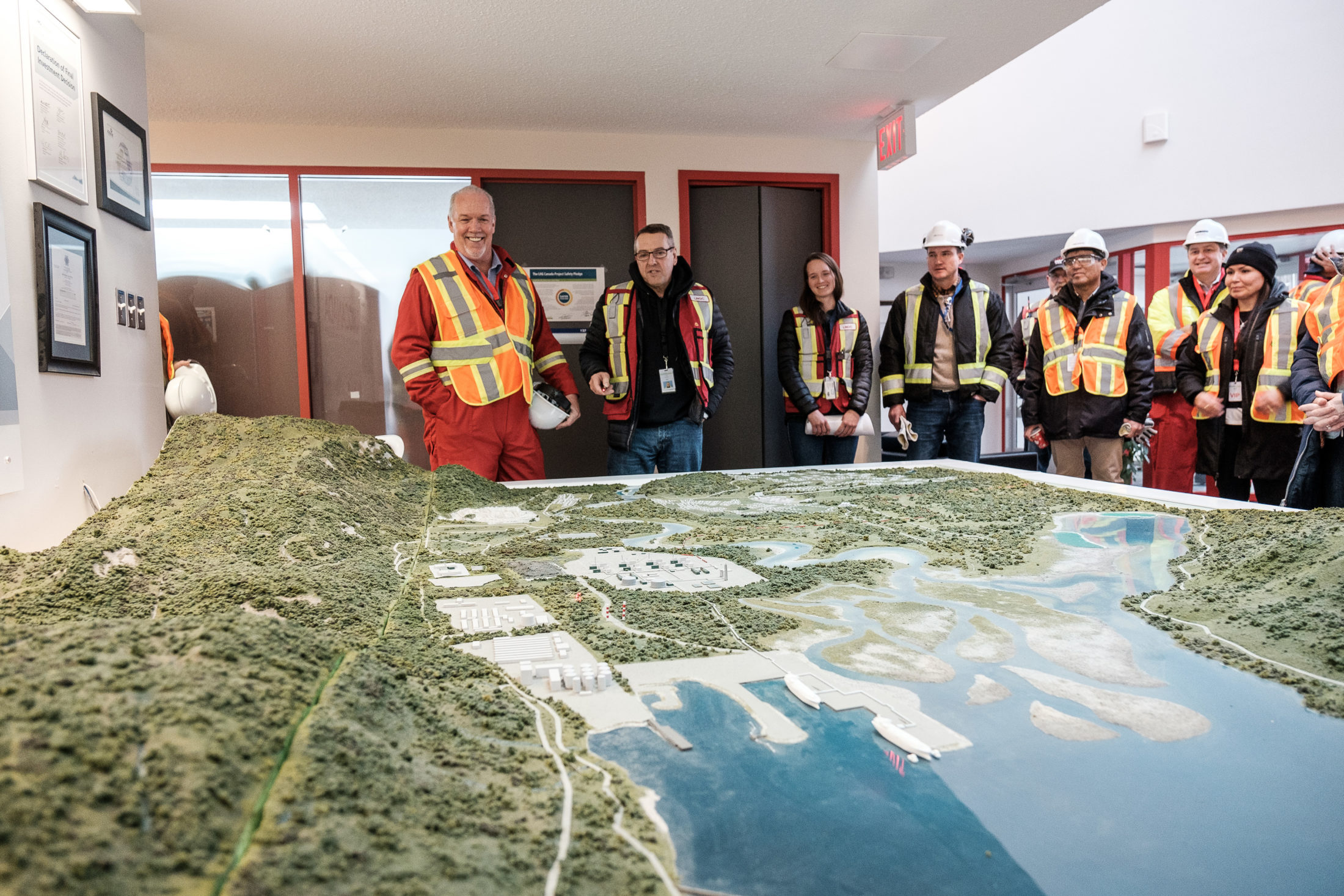
The Narwhal’s in-depth environmental reporting earns 11 national award nominations
From disappearing ice roads to reappearing buffalo, our stories explained the wonder and challenges of...
The oil and gas industry is lobbying the B.C. government for a long-term discount on hydroelectricity, blaming the COVID-19 pandemic for its recent financial woes. Analysts say such a deal could leave residential hydro customers subsidizing one of the most profitable industries in the world.
The Canadian Association of Petroleum Producers and the BC LNG Alliance are pushing for the discount through their participation in the province’s comprehensive review of BC Hydro, which began in June 2018 and is set to wrap up this summer.
The purpose of the review is to determine how the publicly owned utility will support CleanBC, the province’s climate plan. The review will also help frame BC Hydro’s 20-year plan, which is slated to be released in early 2021.
In its submission to the review, the Canadian Association of Petroleum Producers asked the government to establish a discounted “single flat rate” for power that would extend to the entire oil and gas industry on a long-term basis.
Similarly, the BC LNG Alliance asked the government to create an “economic development rate” for industry that would “guarantee rate certainty and stability over time.”
The Canadian Association of Petroleum Producers also asked the government to cover the costs of hydro transmission infrastructure and offer carbon offset credits for using hydropower.
If the B.C. government agrees to a new discounted rate for industrial hydroelectricity, BC Hydro’s residential customers — who already pay more than industrial customers — could be caught footing the bill, said Vanessa Corkal, a policy analyst for the International Institute for Sustainable Development.
“When you bring electricity rates down for industrial producers or fossil fuel producers, that money for the electricity cost has to come from somewhere and often that means other ratepayers,” Corkal told The Narwhal.
The Canadian Association of Petroleum Producers argues that lowering the industrial rate would bring new long-term industrial customers, saying that would help keep residential rates lower.
When B.C.’s New Democrat Party came to power in 2017, it said the nascent LNG industry would undergo “radical electrification,” but the government has never been clear about what, exactly, this would entail.
Fracking operations are spread out on a vast landscape that largely lacks transmission lines and the only LNG project under construction in the province, LNG Canada, will use natural gas to power its energy-intensive liquefaction process and hydroelectricity for other activities.
When the aspirational CleanBC plan was rolled out in 2018, industrial electrification was one of its key planks. The government subsequently funded hydro transmission infrastructure (such as power lines) to support fracking in the Montney region, offered tax breaks to LNG companies that meet “clean” operating standards (such as using hydroelectricity for at least some of their operations) and lowered the hydro rate for LNG facilities to the standard industrial rate.
But hydropower is still much more expensive than natural gas, especially when companies are producing the natural gas themselves and natural gas prices are low.
Prices for natural gas were already low before the pandemic, due to a global gut, but fell to record lows once the coronavirus hit.
Natural gas currently costs nearly $15 per megawatt hour. That’s 75 per cent less than the standard large industrial hydro rate of $60 per megawatt hour. The residential hydro rate is between $94 and $140 per megawatt hour depending on use levels.
In its submission, the Canadian Association of Petroleum Producers said low commodity prices “makes the electrification of B.C.’s upstream oil and natural gas industry uncompetitive due to the significant gap between natural gas prices and hydroelectricity rates.”
In the absence of heavy subsidization, Eoin Finn, a retired KPMG partner who has spent several years studying the benefits and risks of B.C.’s LNG industry, said companies are likely to choose natural gas over hydro. “It’s stupid for a government to assume they would do it any differently.”
In an emailed statement to The Narwhal, the Canadian Association of Petroleum Producers said it is engaging with the government to find ways to lower future emissions and support the objectives of the CleanBC plan.
“Electrification of upstream natural gas and oil facilities represents a significant opportunity to address industrial emissions, and we encourage government to take action to prevent carbon leakage and ensure that electrification is a competitive choice relative to other energy sources,” the association said.
In its submission, the Canadian Association of Petroleum Producers suggested a discounted hydro rate could be indexed to natural gas market prices.
If, for example, the government discounts hydro to make it equivalent to the cost of natural gas, LNG and fracking companies could save hundreds of millions every year, based on BC Hydro’s electricity use forecasts from its submission to the BC Utilities Commission’s inquiry into the Site C dam and the current natural gas price.
Using that scenario, if B.C.’s three most advanced LNG plans — LNG Canada, Woodfibre LNG and Tilbury LNG — come online, they could collectively receive an annual discount of up to $120 million.
The fracking industry, meanwhile, could save between $122 and $180 million per year depending on its growth and how much of its operations can be electrified.
However, according to the association’s submission to the review, “most credible forecasters agree that due to the natural gas glut in North America, there will be ongoing downward pressure on price.”
So oil and gas companies could save even more.
The true discount could become yet deeper when the hugely over-budget Site C dam comes online.

A view of the Site C dam construction site in July 2020. The dam will flood 128 kilometres of the Peace River and its tributaries, including First Nations burial grounds and sites of cultural and spiritual significance. Photo: Don Hoffmann
Finn and other independent energy experts peg the cost of the dam’s power at approximately $120 per megawatt hour — twice as much as the standard industrial rate. If industry were to pay natural gas prices for Site C power it would further put residential hydro customers on the hook to make up the difference.
The B.C. and federal governments have already committed $680 million to build infrastructure to support fracking operations in the Montney Basin through increased electrification
In its submission to the review, the association warned the province that such infrastructure funding could be for naught if a discounted power rate isn’t guaranteed.
“It would not be prudent public policy to expand transmission infrastructure without a fiscal and policy framework enabling customers to connect to an expanded grid,” the association said.
The government appears to have been sympathetic to the industry’s demands even before the COVID-19 pandemic triggered a provincial state of emergency on March 17.
In its interim report on the BC Hydro review, released on March 6, the province said there is “an opportunity for BC Hydro to offer a rate that incentivizes the use of electricity as an alternative to fossil fuels.”
“We are considering measures to reduce the cost for industry to make the switch to clean electricity, ” the Ministry of Energy, Mines and Petroleum Resources confirmed in an emailed statement to The Narwhal.
The province’s interim report also said “access to reliable and secure power at competitive, fair and stable rates is central to [energy-intensive and trade-exposed resource industries’] ability to remain competitive.”
The Canadian Association of Petroleum Producers is pressuring the government to make a decision on the industrial hydro rate as soon as possible in light of the economic fallout from COVID-19.
“We encourage you to consider the urgent need to finalize your recommendations, taking into account this unprecedented situation and the severe financial strain under which our industry is now operating, and as the longer-term impacts of this pandemic are realized,” the association wrote in its submission to the review.
The Ministry of Energy, Mines and Petroleum Producers said it expects to release its final recommendations this summer.

B.C. Premier John Horgan tours the site of the LNG Canada project in Kitimat, B.C., in January 2020. Photo: Province of B.C. / Flickr
Corkal said it’s easy to see the appeal of powering the oil and gas industry through hydro instead of fossil fuels.
“The kicker is that we have to understand the costs of doing that to the general public and to the government, and how is that fitting into the bigger picture,” she said.
In addition to creating higher hydro rates for residential customers, an industrial discount could also have more systemic effects, Corkal said. It could send a false market signal for the viability of fossil fuels when projects couldn’t survive without public support.
“If a project is truly attractive for an investor, [the company] should be able to pay the regular rates,” she said.
A hydro discount for oil and gas producers may also discourage the investment in small-scale renewables needed for an energy transition, Corkal added.
But a key question remains: will electrifying B.C.’s oil and gas sector allow the province to meet its climate targets?
Scientist and energy resources expert David Hughes doesn’t think so.
In a recent report for the Canadian Centre for Policy Alternatives, Hughes showed that even if B.C.’s oil and gas sector used hydroelectricity and reduced methane emissions produced during extraction, its emissions alone would still surpass CleanBC’s 2050 target by 128 per cent.
“CleanBC is a complete joke,” Hughes said in an interview with The Narwhal, adding that the province’s LNG goals are “a complete deal breaker” for B.C.’s climate targets.
Tom Hackney, a policy adviser for the BC Sustainable Energy Association, said the focus of the review should be on establishing a mandate for BC Hydro to help the province meet its climate targets.
That mandate would legislate BC Hydro to work on reducing emissions throughout B.C.’s economy, including residential buildings, transportation and industry, Hackney said.
Tahra Jutt, director of the clean economy program in B.C. at the Pembina Institute, said BC Hydro should take on a more substantial role in climate action given that it’s the main provider of energy services in the province. But Jutt said BC Hydro should be discerning when it comes to electrifying industries.
“We don’t want to be subsidizing more development in the fossil fuel industry,” Jutt said.
Finn said the province should move toward ending fossil fuels subsidies altogether. “We can’t [eliminate emissions] and have an oil and gas industry thriving as a result of subsidized power at the same time,” he said.
“If you’re accelerating towards a climate cliff with a climate crisis looming, the best pedal to pick is the brake pedal not the accelerator.”
Get the inside scoop on The Narwhal’s environment and climate reporting by signing up for our free newsletter. On a warm September evening nearly 15...
Continue reading
From disappearing ice roads to reappearing buffalo, our stories explained the wonder and challenges of...

Sitting at the crossroads of journalism and code, we’ve found our perfect match: someone who...

The Protecting Ontario by Unleashing Our Economy Act exempts industry from provincial regulations — putting...
